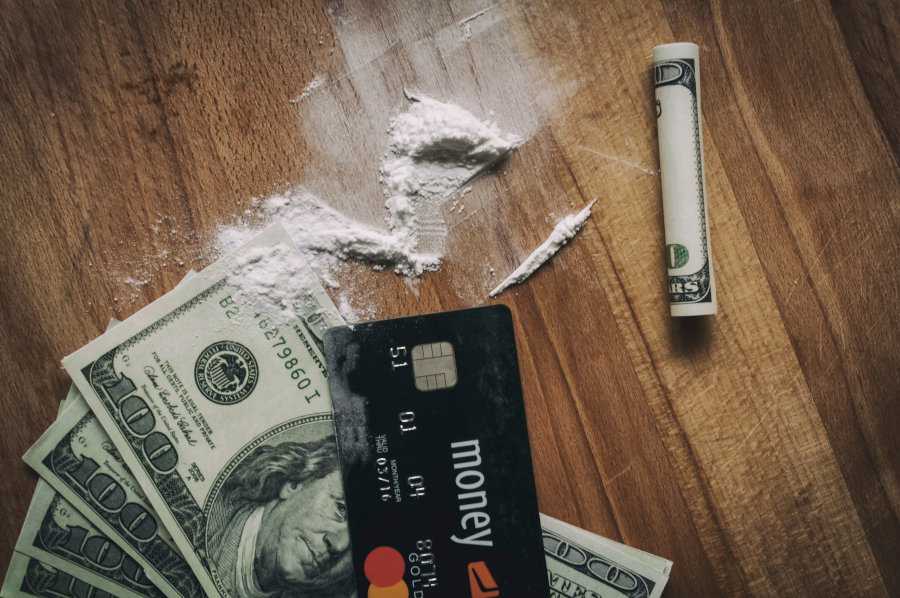
Drugs and Narcotics Charges in California
California has a number of drug and narcotic offenses, all of which carry significant penalties. Individuals who are facing serious drug charges should take the steps necessary to understand the nature of the charges against them and the possible consequences.
Types of Drugs
California divides drugs into five different categories or schedules. Many of these drugs are considered illegal for any amount of possession under the California Health & Safety Code.1 Others may be legal for medical purposes with a valid prescription. The schedule of the drug affects the perception of the seriousness of it and the possible legal consequences. the schedules include:
- Schedule I: opiates, peyote, mescaline, heroin and marijuana
- Schedule II: cocaine, methamphetamine, raw opium, morphine and other narcotics
- Schedule III: benzphetamine, clortermine, anabolic steroids and pentobarbital
- Schedule IV: prescription drugs such as zolpidem and diazepam, barbital, chloral hydrate and methohexital
- Schedule V: codeine and cough suppressants
Types of Drug Charges
There are a number of drug charges that range in severity and potential consequences. Some California crimes associated with drugs and narcotics include the following:
Possession of a Controlled Substance – Health & Safety Code 11350
It is unlawful for a person to be in possession of certain drugs, including some prescription medications.2 A person who violated this law previously faced a maximum penalty of up to three years in a California state prison.3 However, recent changes in the law have changed this offense to a misdemeanor offense which carries a maximum penalty of one year in a county jail.
In order for a person to be convicted of a drug possession charge, the prosecution must prove the following:
- The drug was a controlled substance
- The defendant was in unlawful possession of the controlled substance
- The defendant was aware of the presence of the controlled substance and that it was a controlled substance
- The defendant possessed a usable amount of the controlled substance
Prosecutors can charge possession in one of three ways:
- Actual possession – This possession is present when a drug is physically on a person
- Constructive possession – This possession is when the controlled substance is somewhere that the defendant can easily access it, such as in his or her car or home.
- Joint possession – This possession arises when two or more people have ownership of a controlled substance. The drug may be found in a space that they shared.
Possession for Sale of Narcotics – Health & Safety Code 11351
This crime makes it illegal to possess illegal drugs when the defendant has the intention to sell them.4 This crime is considered more serious than drug possession. As such, defendants facing this crime are subject to a felony conviction and are not eligible for relief offered to possession offenders, such as drug diversion programs. In many cases, circumstantial evidence may be used to convict defendants, such as having a higher quantity of drugs, drugs packaged in separate containers or having a large sum of cash.
Sale or Transportation of a Controlled Substance – Health & Safety Code 11352
This crime makes it illegal to sell, furnish, transport, import, administer or give away illegal narcotics.5 This is considered a felony offense. Many of these charges arise out of special sting operations conducted by law enforcement.
Possession of Drug Paraphernalia – Health & Safety Code 11364
Individuals may be charged with possession of drug paraphernalia if they have certain items associated with drug use.6 This is considered a misdemeanor offense with a maximum sentence of up to six months in county jail.
Possession of Methamphetamine – Health & Safety Code 11377
This offense illegalizes the possession of methamphetamine.7 This crime is now charged as a misdemeanor. However, felony convictions can result if the possession was for the sale, transportation of manufacturing of this drug.
Manufacturing Drugs & Narcotics – Health & Safety Code 11379.6
This crime may be charged when a person operates a meth lab, compresses marijuana into hashish or otherwise takes action to manufacture or produce a controlled substance.8 This crime carries a possible sentence of up to seven years in state prison. The sentence is harsher when there are larger volumes involved, someone is injured or killed during the drug manufacturing process or when children are nearby.
Cultivation of Peyote – Health & Safety Code 11363
This law make sit illegal for a person to cultivate, harvest, plant or process peyote.9 This crime may be charged as a felony or misdemeanor offense.
Possession of Materials for Manufacture of a Controlled Substance – Health & Safety Code 11383
Another drug and narcotics related offense that may be charged is possession of materials for manufacture of a controlled substance.10 This offense may be charged when a person is in possession of certain chemicals that are used to manufacture methamphetamine or PCP. This crime is charged as a felony.
Under the Influence of a Controlled Substance – Health & Safety Code 11550
In addition to possession, a separate offense may arise when a person is using or under the influence of a controlled substance, including heroin, cocaine, GHB, Xanax or valium.11 This offense carries a maximum penalty of one year in county jail and is a misdemeanor.
Possession of Marijuana
Possession of marijuana is now considered an unserious offense and is often charged as an extraction.
Consequences of a Drug Conviction
There are many possible consequences to being convicted of a drug offense. In addition to time in jail or prison, an individual can be denied public benefits, denied financial assistance for college, be prohibited from living in federal housing, accumulate a criminal record that can impact his or her ability to find a job and face immigration consequences.
Drug Diversion
A drug diversion program may be an option for many people charged with drug-related crimes, especially possession charges. Proposition 47 was enacted largely to encourage individuals to seek treatment instead of taking up more space in prison. This program is usually available to people who are charged with a misdemeanor offense.
Individuals who enter a drug diversion program plead guilty to the underlying offense. Sentencing is delayed while the defendant completes the drug treatment program. Once he or she completes the program and complies with other requirements, the case against him or her is dismissed.
Legal Defenses
A criminal defense attorney can angle for the completion of a drug diversion program instead of jail time. However, if this option is not available, he or she may lodge a defense against the charges that the defendant is facing. Some potential defenses include:
- Police violated search and seizure rules, leading to the need to suppress negative evidence
- Warrants were acquired through false statements by police or confidential informants
- The sting operation was in violation of California entrapment laws
- The controlled substance belonged to someone else
- The substance was not a controlled substance
- The defendant had a valid prescription for the controlled substance
- The defendant was only in possession of drug residue and not a usable amount of the drug
- The defendant was not aware of the presence of the controlled substance
- The defendant was not in possession of the controlled substance
Every case is different and requires a careful assessment of the facts and circumstances surrounding the offense and investigation. A criminal defense attorney can analyze the case and determine possible defenses to the charges the defendant faces.
References
1 California Health & Safety Code §11350 – makes it illegal to be in possession of certain narcotics, including cocaine, crack, heroin, ecstasy, ketamine, GHB and certain prescription drugs without a valid prescription.
2 See California Health & Safety Code §11350.
3 Proposition 47 – In November 2014, Proposition 47 changed this offense from a felony to a misdemeanor. Individuals sentenced before this crime was enacted may be eligible to be re-sentenced under Proposition 47.
4 See California Health & Safety Code 11351.
5 See Health & Safety Code 11352.
6 Health & Safety Code 11364 – Makes it illegal to be in “possession of an opium pipe or any device, contrivance, instrument, or paraphernalia used for unlawfully injecting or smoking a controlled substance.” This includes hypodermic needles, pipes, bongs and cocaine spoons.
7 See Health & Safety Code 11377.
8 See Health & Safety Code 11379.6.
9 See Health & Safety Code 11363.
10 See Health & Safety Code 11383.
11 See Health & Safety Code 11550.
